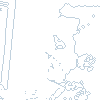|
|

|
|||||||||||||||||||||
|
|
||||||||||||||||||||||
|
|
Awareness An interview about models of perception of telepresence with Wolfgang Prinz, Monika Fleischmann and Wolfgang Strauss |
|||||||||||||||||||||
|
|
||||||||||||||||||||||
|
|
|
|
||||||||||||||||||||
|
The subject of awareness as electronically supported perception of activities at different locations is generating a great deal of interest in CSCW (Computer Supported Cooperative Work) research groups, particularly since the advent of e-commerce / e- business / e-learning applications on the Internet. While research in this area is focused strongly on group awareness in distributed work scenarios, media artists deal mainly with aspects of perception in media spaces and the issue of private and public space. |
||||||||||||||||||||||
|
||||||||||||||||||||||
|
netzspannung: What does the term awareness mean to you?
Wolfgang Prinz: For me, awareness means the perception of activities within the workgroup I'm working with, as well as the perception of activities which take place in other locations. The question is, how do you support group awareness within teams distributed across a local area so as to overcome the social divide between them? One example of concrete scenarios is the In general, you obviously have to realise that awareness is only one side of the coin, the other being surveillance and control and/or protection of the private sphere. In principle, all awareness systems can be used and interpreted as »Big Brother« systems. In presenting our awareness projects, we have found that people already working intensively with groupware systems see the value of these systems in networked processes. Those who have never worked with them before tend rather to see the problems connected with such systems. I think that it will take a while before the need for awareness as functional support for cooperation processes becomes clear. Ways still must be found to deal with social processes which lie between surveillance and protection of the private sphere. Fleischmann / Strauss: Awareness encompasses consciousness, the state of consciousness and recognition. In information technology, the term is associated with the perception of activity in conjunction with telepresence. It involves developing a teleconsciousness of communication processes. These communication processes rest on the activity of people, robots or data streams. In the same way as there is a social awareness between people, you can also talk about an awareness between different pieces of data. In genetic algorithms and neural networks, the closest neighbours respond to the current status of a communication model because they are »able to learn« and have artificial intelligence. Awareness methods which combine the media space and the real space are interfaces such as computer vision or tracking systems, web cameras, electronic fields, sensors, etc. They measure and signal the change from one digital status to another. These changes are made visible, audible, noticeable, perceptible - i.e. they can be experienced. It's all about the development and perception of the electronic double, the traces it leaves in the network and the effect of this network activity on the real space. What projects best depict the current approaches to awareness in the area of CSCW research?
Wolfgang Prinz: There is an EU initiative dealing specifically with What current work in the area of media art and design best depicts the different approaches to awareness?
Fleischmann / Strauss: Tangible media is a research group led by
As part of the EU's i3 programme on Inhabited Information Spaces, in the
Early awareness concepts can be found - going by different names - in telematic art projects ranging from » Since the mid-90s, there has been a growing trend towards the networking and surveillance of everything and everyone. How do you see the issue of privacy and surveillance in the context of awareness? Fleischmann / Strauss: In 1984, George Orwell's »Big Brother« was a vision which had not become reality. In the year 2000, when we're watching daily »Big Brother«-style »reality soaps«, Orwell's vision is no longer picked out as a central theme. It's no longer relevant. These days, everyone wants to be seen, nobody is afraid of the camera and the issue of surveillance has become one of general exhibitionism instead. The primary role of surveillance cameras in shops these days is no longer to intercept shoplifters, but instead to assess and respond to customers' shopping behaviour. Cameras are our constant companions and computers have become major players in our personal environment in the form of mobile phones. In a games-loving society like Japan, there are public services for the games community. In the district of Shibuya in Tokyo, Panasonic and Sony use their huge public screens to compete for the greatest number of visitors and invite people to send in emails from their mobile phones to be displayed on the screens in the public square and on the Internet. The square is also monitored by a web camera. Most of the young players make themselves known by waving at the camera in order to have their images projected onto the skyscraper screens.
This continuation of the »
One work of art which has dealt intensively with issues of public space and online culture is » We would therefore like to see public surveillance technology used to create a publicly accessible information and communication space. Surveillance cannot be the strategy for solving social problems which are becoming visible as they escalate. Instead, environments need to be created in which people can perceive the situations which bring out these problems, recognise the causes and try out strategies for dealing with them in a productive manner. For example, electronic games and learning fields ought to be installed at the flashpoints of society. This would mean putting media laboratories in cities, schools and playgrounds as a way of renewing the public infrastructure of outdated and wooden strategies. Since this is not going to happen, society and industry will create a new environment for politics and build up an electronic surrogate-space using technologies such as the Internet, cellular phones and mobility. While the subject of awareness developed very rapidly along with the Internet, the area of computer-supported collaborative work goes back to the early 1980s. What were the key milestones in the development of CSCW?
Wolfgang Prinz: It all began with an attempt to provide a very mechanical means of supporting work. People were seeking models with which to model processes. These models enabled work processes to be controlled and monitored. Many
Another system which relies very heavily on the space metaphor is DIVA, which is also the brainchild of our research institute. What is the relationship between the issue of awareness and telematics and virtual reality? Fleischmann / Strauss: While the current approaches to awareness are definitely being determined by the Internet boom, the historical development of virtual reality (VR) has been equally important in this context. It motivated people to conduct scientific and artistic experiments with themes such as telepresence and the perception of virtual or remote spaces and people. This exploration lies at the root of our current understanding of awareness.
The development of virtual reality took place in different contexts, including the computer industry, the military, the NASA, science fiction, art and alternative culture. Virtual reality developed from the fictional idea of jumping into a data space in William Gibson's »
The technological forerunners of today's systems were the data spectacles (head- mounted display) developed by Ivan Sutherland in the late 1960s and the Air Force »super cockpit« developed by Thomas Furness in 1982. In August 1989 the companies VPL and Autodesk introduced
In 1990, John Perry Barlow's article »
In parallel to this development of a virtual space - as a utopia and a simulation - the networked space has been with us since the 1960s. During the cold war, the Defense Advanced Research Projects Agency of the USA developed a decentralised communication space (the
The subsequent invention of the What is the relationship between these developments and media art?
Fleischmann / Strauss: The subjects explored by telematic art are particularly focused on the relationship between the near and the remote and experiment with all possible forms of telepresence. How do I experience the presence of another person who is not here but appears to be here? »
In the Japanese virtual reality project »InterDis-communication Machine« by Kazuhiko Hachiya, two participants wear head-mounted displays which enable them to perceive the sights and sounds experienced by the other player instead of their own. In a similar way as in the film » Networking and visualisation techniques taken from science, art and architecture have shaped the current state of the art in media art, technology and design. The scientific background to the whole development process is cybernetics, a field led by Norbert Wiener, Heinz von Foerster, Gregory Bateson, Ernst von Glasersfeld and others.
On the one hand, we now have the dematerialisation theory, which says that the body disappears. On the other hand, there is an understanding of how the media exert an influence on the body and how this moulds and formulates the body in a constant, evolutionary process of »body shaping«. From these two theories and from current research in science and technology a third theory, the genome theory, is emerging. It argues that, instead of the »quasi-natural body« of machines of all types, virtual or real, intelligent, self-learning, autonomous models are emerging, which can in turn control our bodies, as
The interface which links the real body with the technical body places the user in a situation which does not reflect the perception process in an effort to create an illusion, but rather allows the user to see how this process works. Numerous media art projects are taking as their central theme the confrontation with artificial systems or independent machines which simulate new forms of awareness vis-à-vis a participant's own body. Since around 1998, we have seen the development of mixed reality concepts which link the virtual space into the real space. This produces the »awareness« of the hybrid space, which arises from the overlapping of a participant's perception of the real space and his own body with the perception of other participants in networked spaces. Our performance installation » It is a historical feature of CSCW that teams working on the development of CSCW or awareness systems are mainly interdisciplinary teams. Which disciplines do these teams consist of? Wolfgang Prinz: Most of the people involved, as developers of these systems, tend to be IT specialists. Social scientists are also involved. They evaluate the systems, assess their uses and above all are very closely involved in participative design processes. Psychologists experiment with the systems and ethnographers observe the work processes with a view to finding out how they can be better supported. Where do you see the difficulty in communicating the relevance of the artistic research of communication processes and awareness to scientific projects and technological development? Wolfgang Prinz: I don't know whether this needs a special language, but I think that openness on the part of all disciplines is required. The way to proceed is to organise and carry out events where the various disciplines work together and where you can try to find areas of synergy. I don't know whether just trying to find a common language or communication concept is likely to succeed. In the end, a great deal hinges on people working together. Let's take the analogy of what happened at the start of CSCW, i.e. linking IT with social sciences or ethnography. At the beginning, there was a whole host of misunderstandings between the various disciplines, making it very difficult to bring them together. Successes only began to come about when institutions or centres had been founded where the disciplines could work closely together, learn from each other and develop a common linguistic understanding through joint research in an iterative manner. I believe that you first need real events from which web platforms can be created. The web is currently overloaded with meeting places, events, platforms and discussion forums. It is very important to bring people together first in order for a personal relationship to form. An attempt should then be made to create a platform which will keep this relationship alive. This brings us back to the subject of awareness. Once the people have been brought together they should be accompanied online, so that they feel a presence, be aware of a presence - and through this enter in communication. Thank you for the interview. The interview was conducted by Jasminko Novak. |
||||||||||||||||||||||















 Intro
Intro